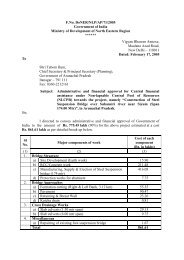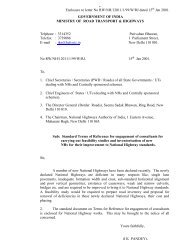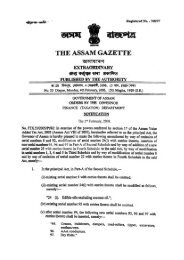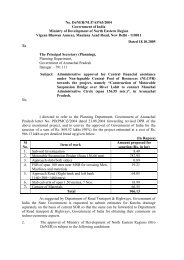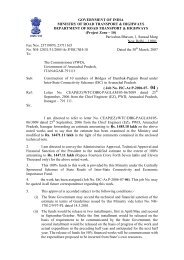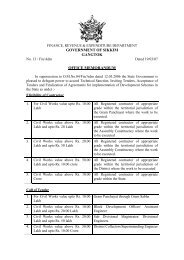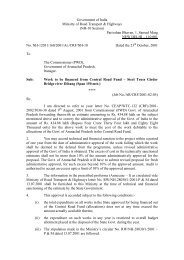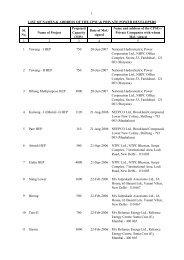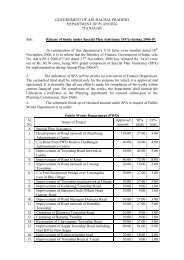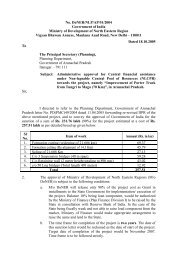TRAINING CIRCULAR - Arunachalpwd.org
TRAINING CIRCULAR - Arunachalpwd.org
TRAINING CIRCULAR - Arunachalpwd.org
You also want an ePaper? Increase the reach of your titles
YUMPU automatically turns print PDFs into web optimized ePapers that Google loves.
1<br />
NORTH-EAST COUNCIL : FIRST SECTORAL SUMMIT<br />
Pasighat Proclamation on Power<br />
17 January 2007<br />
1. After viewing the presentations and listening to the interventions of all the<br />
principal CPSUs, Agencies, State Governments and Union Ministries<br />
involved, it would appear that there is need for a clear, coherent and<br />
consistent policy in respect of the power sector in the North-East Region,<br />
especially as the power sector constitutes the most important resource of<br />
the Region and holds the highest potential to propel the Region to the<br />
front rank of development in the country. With this overarching objective<br />
view, the following major elements have been identified which the<br />
Ministry of DoNER might pursue with the Union Government, NEC and<br />
States concerned to evolve the required clear, coherent and consistent<br />
policy for the development of the power sector in the North-East Region.<br />
2. The most important element of this proposed policy would be to reach the<br />
benefits of power availability to the people of the Region. As such, the<br />
thrust towards “Power to the People’’ requires prioritization.<br />
3. The second priority in respect of the development of the power sector in<br />
the North-East Region is to ensure that the growing and diversified<br />
demands for power for the economic development of the North-East<br />
Region are met in full.<br />
4. The third priority would be the export of power from the region to<br />
elsewhere in the country so that the North-East Region does in fact<br />
become the ‘'powerhouse” of the country.<br />
5. To achieve the first objective, namely, “Power to the People”, top priority<br />
attention requires to be paid to the Small Hydro Power Programme (SHP)<br />
for the NER, to be supplemented by other sources of new and renewable<br />
energy such as biomass and solar energy. It is evident that the existing<br />
structure of SHP is proving inadequate for accelerated implementation in<br />
NER, as evidenced, for instance, by the fact that out of 492 projects<br />
identified in Arunachal Pradesh, the NER state with the highest SHP<br />
potential, only 64 have been implemented, 48 are under construction, and<br />
thus as many as 380 out of 492 projects are still far from being<br />
implementable. At the same time, it is evident that households around the<br />
North-East, public thoroughfares including highways and trunk roads and<br />
other public places need to be lit up at night both for the people’s comfort<br />
and as a security measure. Yet, although 62% of villages are electrified,<br />
only 24% of households receive electricity. Therefore, the following<br />
inter-related policy measures appear to be required:<br />
a) Restructuring SHP for NER so that the level of subsidies ensures<br />
accelerated implementation of all identified SHP projects in NER



